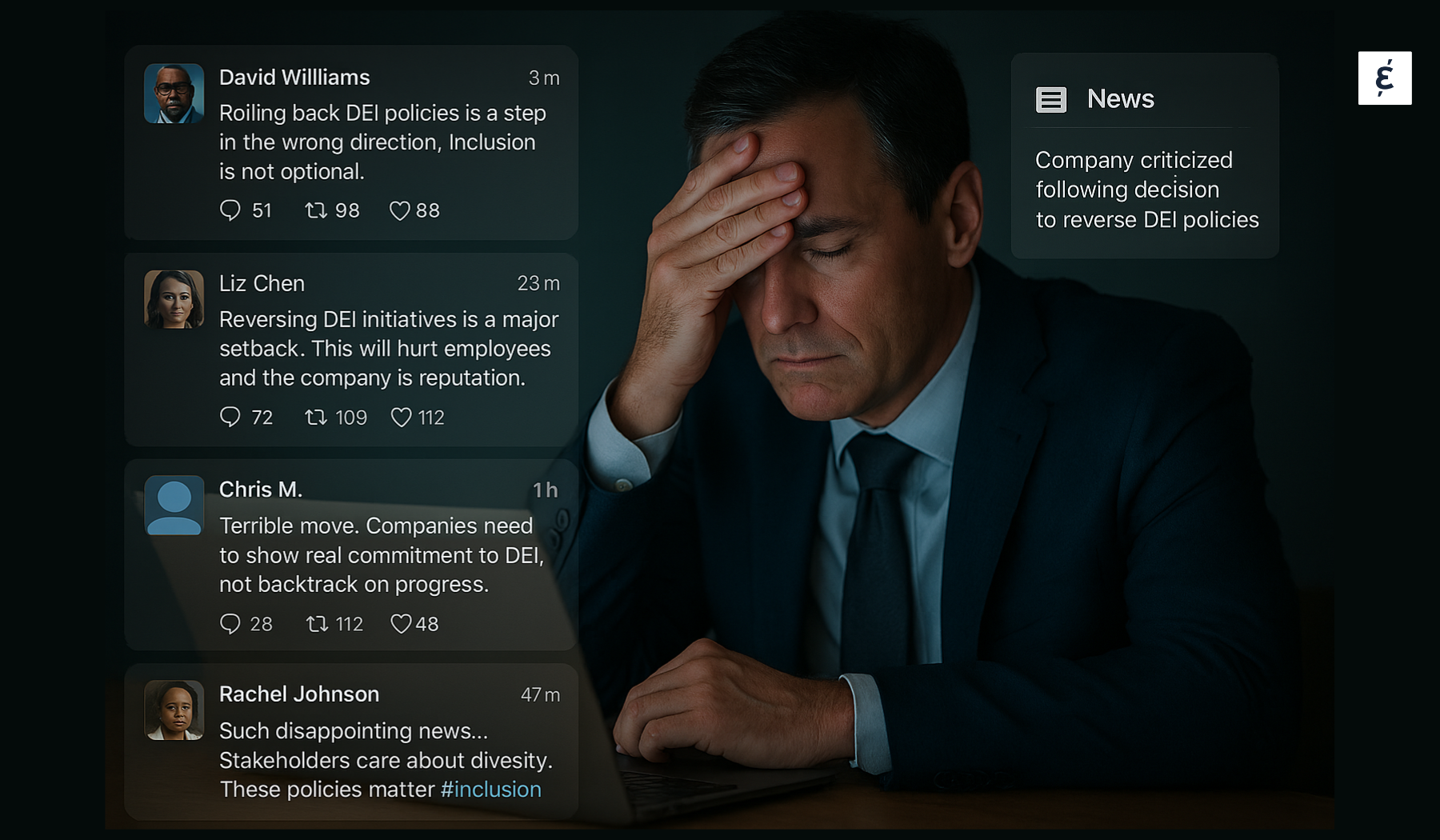

Many will consider the terms “corporate branding” and “reputation management” as recent – or not-so-recent – buzzwords in the worlds of business, marketing, and communications.
I happen to think they’re both highly important and fully developed disciplines within business management. That’s probably not surprising, given my role as a corporate brand and reputation consultant.
What is surprising is that even those companies and leaders who take these disciplines seriously often fail to build positive perceptions of their business in the marketplace and consequently miss out on opportunities to improve performance through stronger customer relationships and stakeholder advocacy.
This failure happens for many different reasons:
Many companies succeed at defining their internal identity and essence in a credible and differentiated way and making it a driver of behavior and communication.
This brand-led thinking is a great asset, but it often neglects to take into consideration the perceptions and expectations of the outside world beyond the customers, including stakeholders like policy-makers, suppliers, partners, and even society at large.
While Apple is undoubtedly a strong company, for a while, it was suffering from this short-sightedness, which had hurt the brand and the company.
2. Overly outward focus
Other companies err in the opposite way by paying a lot of attention to what people expect from them but forgetting to use their unique value-creation story as a cornerstone for engaging stakeholders and developing the company.
This reputation-led approach may win a license to operate, but it fails to inspire audiences and drive preference and differentiation. Sony and its decade-long identity crisis come to mind.
3.Turf wars
Not unrelated to the issues above, turf wars and silo-thinking – between Marketing and Communications, between Corporate Affairs and the Business Units, between HR and everyone else – often hinder sincere efforts to improve stakeholder perceptions in a coordinated way. Nokia can be viewed as an example of that.
4. Words louder than actions
Most of the brand and reputation failures I’ve experienced had to do with the fact that the company’s day-to-day actions and culture – whether demonstrated by management, staff, or through the company’s products and activities – simply did not live up to what the company claimed to stand for, or what it promised stakeholders.
One of the most notable examples is Enron, whose values included “integrity”, and a more recent one is VW Dieselgate – which got the company removed from the FTSE ‘ethical’ index.
To succeed in forming positive perceptions and securing sustainable support from customers, employees, and other stakeholders – companies and their leaders need to take an integrated approach to brand and reputation management and focus on building strong and lasting character.
“Just as character matters in people, it matters in organizations,” some say – and I couldn’t agree more. And while it’s a long-term effort, there are clear steps to follow:
5. Articulate character
Find your true identity and your unique purpose – what makes you tick as an organization and what makes you different from others – and articulate it in a clear and inspiring way.
Yes, it would require looking inside the company: at the culture and competencies, at your past and heritage, and at your future and growth prospects.
But listen also to your various stakeholders and what they see as your true identity – this is often a better reflection of who you really are than who you think you are internally.
6. Demonstrate character
Work hard on aligning your purpose and values with the organization: its customer experience, stakeholder engagement activities, business strategy – and most importantly, culture and behavior.
7. Stay true to character
Herein lies the prize – to make your corporate character truly strong and lasting, you will need to manage it carefully over time.
This means ongoing dialogues with stakeholders to inform and adjust internal decision-making in a structured (rather than ad-hoc) way; management tools such as KPIs to ensure ongoing goal-setting and evaluation on both personal and company-wide levels; identification of, and preparation for, potentials risks; and integration of your corporate character across the organization’s silos so that it’s managed effectively in concert.
This type of prescription often feels easier said than done, but with CEO commitment, collaboration at the top of the company, and staff engagement – this process is not only realistic but also healthy and inspiring for the whole organization.
So, is corporate character yet another buzzword? Some will surely claim it is. But however you look at it, one thing is clear: just like people, organizations that are driven by their very own purpose and act with integrity win the trust and affection of those around them, and that makes them stronger. This is a simple fact that’s hard to dispute – and organizations of all kinds will benefit from taking note.
Make sure that your belief system (purpose, vision, values, and any other elements reflecting it) really serves as a filter and guidance for decision-making at every level of the organization.






© 2024 Group Caliber | All Rights Reserved | VAT: DK39314320